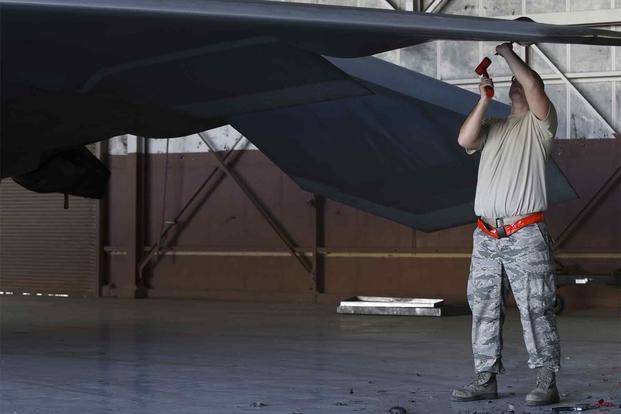The U.S. Air Force wants to downsize from seven types of fighter jets or attack aircraft to a mix of four, including the A-10 Warthog close-air support aircraft, the service's top general said Wednesday.
Speaking during the annual McAleese conference, Gen. Charles "CQ" Brown said the service expects to determine the right mix of aircraft for the future through its "TacAir study." It will also assess how future fighter concepts will fit into the current mix of fourth- and fifth-generation fighters. But noticeably absent from his list were the F-22 Raptor stealth fighter and F-15E Strike Eagle.
"My intent is to get down to about four," Brown said during a panel. "And really, a four plus one, because we're going to have the A-10 for a while ... [the F-35 Joint Strike Fighter], which will be the cornerstone, the F-15EX, and then we're going to have [the F-16 Fighting Falcon] for a while as well."
Read Next: The Army Is Ditching All of Its Stryker Mobile Gun Systems
Brown said the fighter mix also will include the Next Generation Air Dominance (NGAD) program, which defies the traditional categorization of a single platform, featuring a network potentially including an advanced fighter aircraft alongside sensors, weapons or drones in a growing and unpredictable threat environment.
Service leaders have hinted that while the F-15EX, a fourth-plus generation fighter, is meant to replace the legacy F-15C/D models, it also could replace the E Strike Eagle model in the future, given its weapons load. The F-15EX, known as the Eagle II, will someday incorporate "hypersonic weapons up to 22 feet long and weighing up to 7,000 pounds," according to Boeing Co., its manufacturer. The service first revealed it could replace the E with the EX "as an option" in a 2019 Justification and Approval request.
The F-22, meanwhile, has needed an increasing number of repairs and upgrades in recent years, including improvements to its low-observable stealth coating.
Earlier in the McAleese session, Lt. Gen. David S. Nahom, deputy chief of staff for plans and programs for the Air Force, said the F-22 is the dominant air superiority platform in the service's inventory. But he admitted there are shortfalls, especially in the maintenance of the aircraft.
"The crews that fly and the crews that maintain and fix it are just amazing people because that is a tough airplane to maintain, and move around," he said.
The stealthy F-35 has more durable low-observable technology because the Air Force, Navy and Marine Corps each fly a variant of the aircraft designed for different scenarios, from landing on conventional runways on land, catching arresting cables on aircraft carriers, to hovering down on amphibious assault ships.
"We're going to have to go past that [to] where the threat is moving, where the technology is moving," Nahom said, referencing a fighter that offers more than the F-22 in air-to-air combat.
The F-35 fleet eclipsed the number of F-22s in 2019 -- with 203 at the end of that fiscal year; the Air Force capped its Raptor fleet at 187 in 2009 (it currently has 186). As noted by The Drive, one-third of the F-22 fleet is not combat-coded -- or operational for a wartime mission -- at any given time.
Earlier this month, Brown said the Air Force's F-35 fleet also officially surpassed the number of F-15 and A-10s, becoming the second-largest fighter jet fleet in its aircraft inventory.
Air Force spokeswoman Maj. Malinda Singleton told Military.com last week that the service has 283 F-35s, which exceeds the A-10 fleet by two aircraft. According to the Air Force Association's 2020 aircraft almanac, the service has 241 F-15C/D models and 218 Strike Eagles.
-- Oriana Pawlyk can be reached at oriana.pawlyk@military.com. Follow her on Twitter at @Oriana0214.
Related: Did the Air Force Dash Hopes for Building More F-22s?















